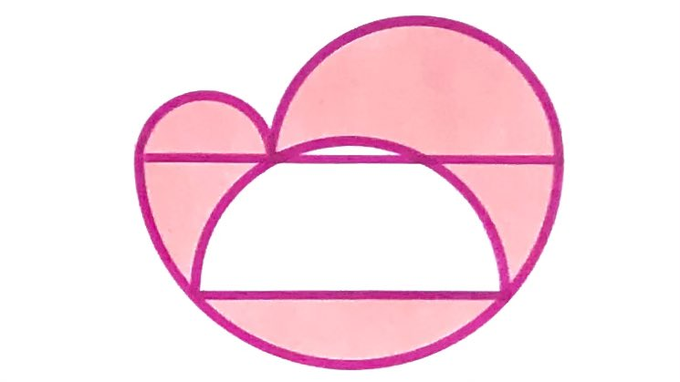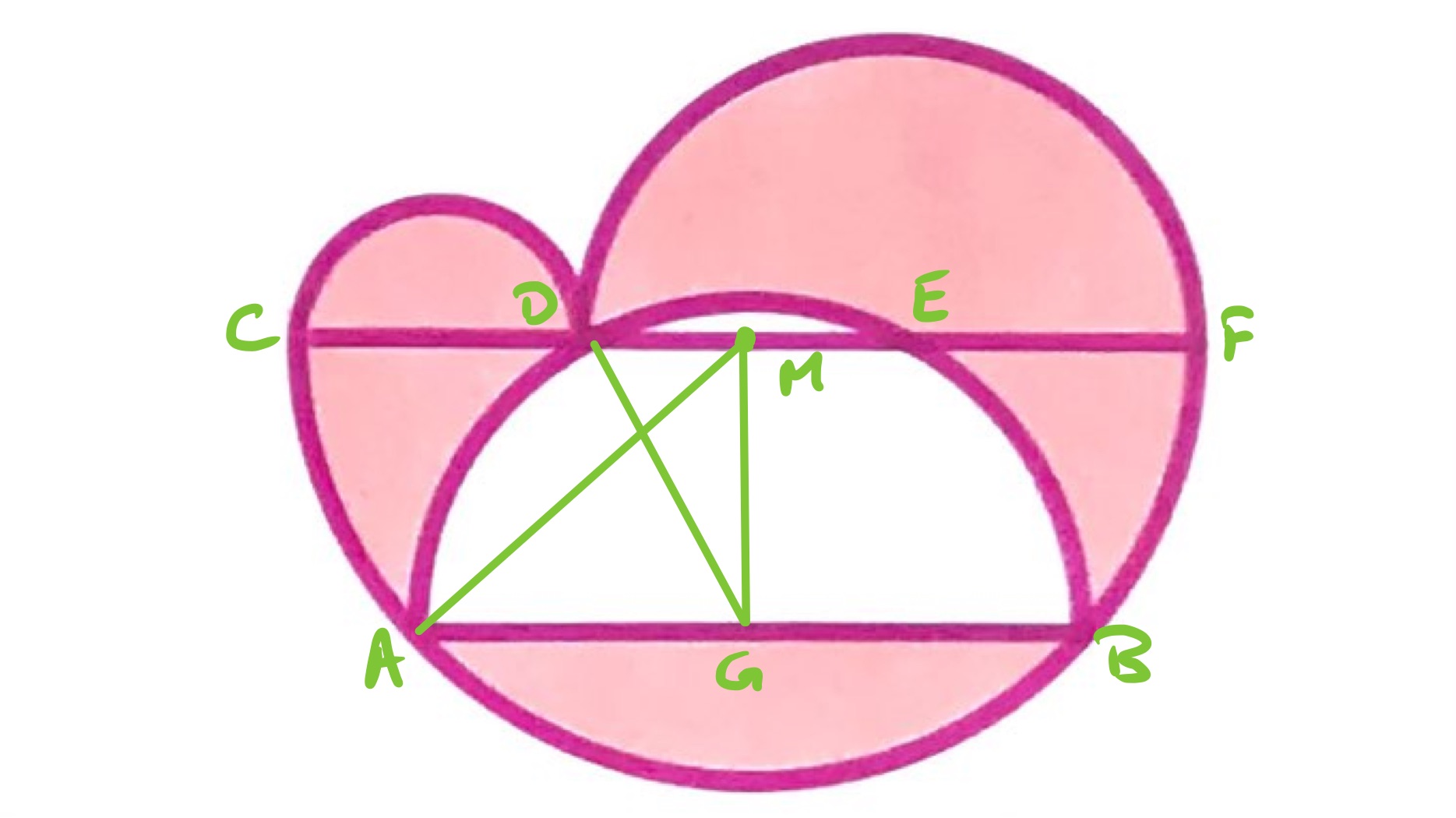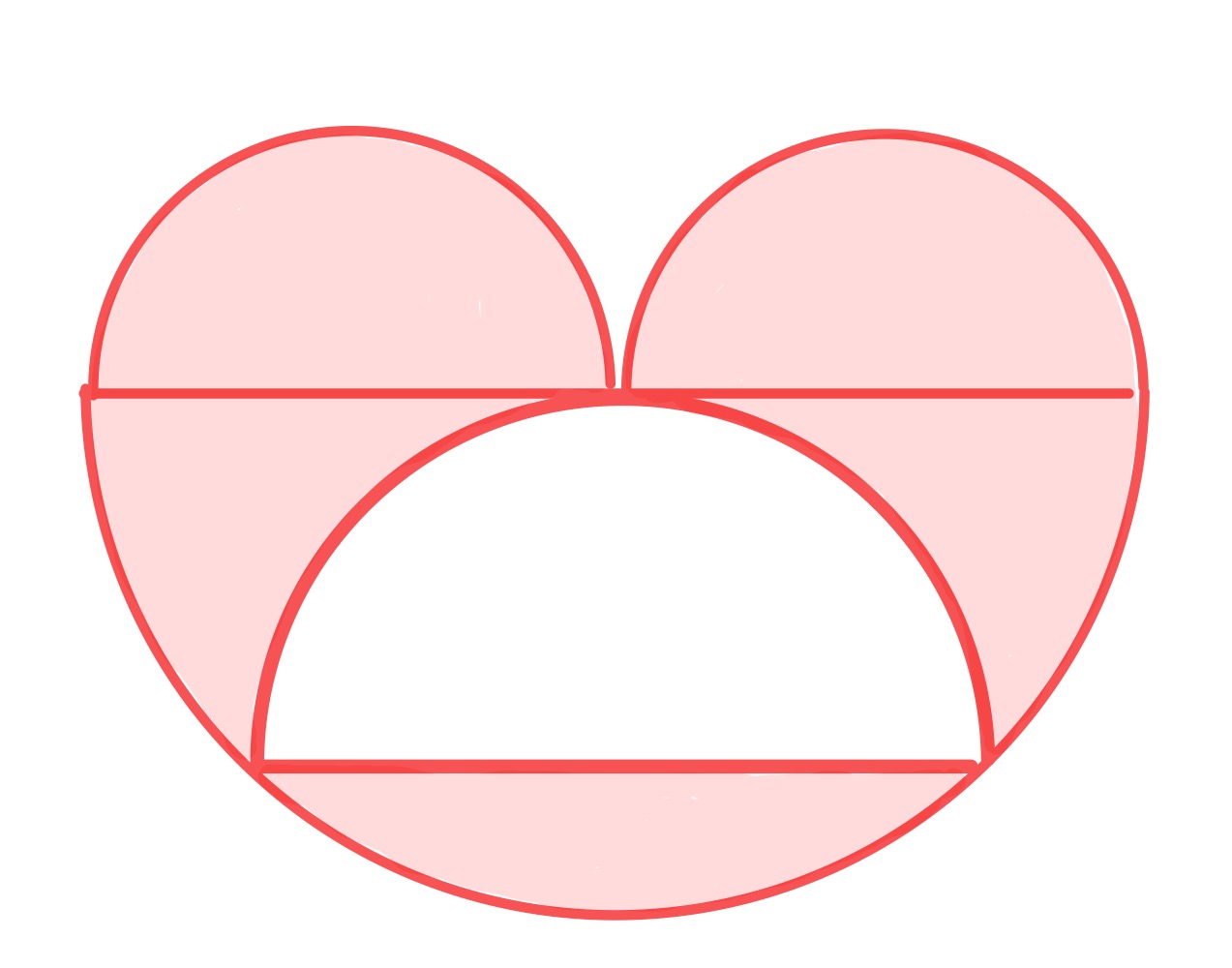Notes
four parallel semi-circles solution
Solution to the Four Parallel Semi-Circles Puzzle

The bases of all semicircles are parallel, and the largest one has diameter . What’s the total shaded area?
Solution by Properties of Chords and Pythagoras' Theorem

In the above diagram, the points labelled and are the centres of their semi-circles. Since is a chord on the largest semi-circle, and is its midpoint, the line is perpendicular to and so also perpendicular to . Triangles and are therefore a right-angled triangles.
Let , , and be the radii of the semi-circles other than the largest, with the length of as , of as , and of as . Since has length , so . As is the midpoint of , has length , so has length . Let be the length of .
Applying Pythagoras' theorem to triangles and shows that:
Putting these together and eliminating shows that:
Since , , so . Substituting this in shows that:
So .
From the area of a circle, the shaded area is given by:
Solution by Agg Invariance Principle
The point labelled in the above diagram can move along the diameter .

With at the midpoint the radii of the circles are in the ratio so their areas are in the ratio . The two smaller semi-circles therefore have the same area as the middle one, leaving the equivalent of the largest semi-circle in total area.

Placing at the end of the diameter, the white semi-circle coincides with one of the upper semi-circles, and the other has zero size. The shaded area is therefore just the lower semi-circle.